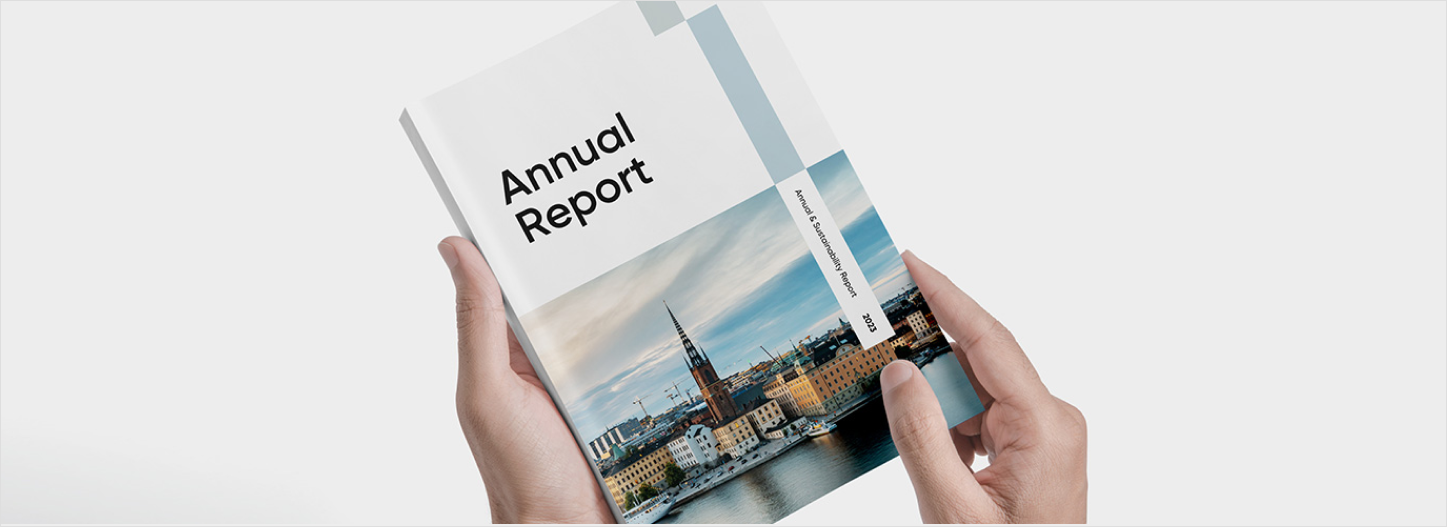Landscape annual reports: the new norm in digital times

Annual reports are considered by many to be one of the most important channels of financial communication, and many companies spend considerable resources on their annual report each year. Traditionally, annual reports have been prepared in a portrait format, but in recent years there has been a transition where more and more listed companies choose to create landscape reports. Let's take a closer look at this change and understand how it affects reporting and the process around it.
Tradition meets modernity: Portrait vs. landscape annual report
Preparing annual reports in a portrait format is still the most common way to design a report and often looks good in printed editions. Moreover, the majority of investors are used to the format and many companies see no reason why they should change the look of the report. At the same time, the world has changed. Today, many investors read the reports via company IR pages, which means that companies have to rethink their strategies as digital reading brings different needs.
Screen-friendly reading: why landscape reports are gaining ground
A portrait format is not as suited to a computer screen and often makes it difficult for investors to read reports. This is the main reason why more and more companies are reporting in a landscape format. Unlike traditional reports, landscape annual reports allow for much smoother navigation and are optimized for screen reading. To strengthen navigation, many listed companies choose to develop a clickable menu for the landscape annual reports that follows the reading process. This strengthens the digital user experience and gives an impression of the report that is similar to a website.
Using the menu, the reader can quickly find the information they are looking for and navigate between the different parts of the report. The menu can also be both horizontal and vertical, with the advantage of the horizontal one being that it provides a quick overview of the available sections and leaves more space for the main content of the page. A further advantage of landscape reports is the increased possibility of using graphics, which can be varied to a greater extent with a wide format. There is also room for more text, which is beneficial if there is a lot of text-based information to include. A landscape report is also preferable if you want to use the information as presentation material in other channels. At the same time, landscape annual reports present challenges for printing. With deviating dimensions, companies need to find solutions that fit, and if the printed editions are a higher priority than digital versions, it is not as obvious to abandon the portrait format. That said, most reading is done online and it may make sense to adapt to the main needs of the target audience.


Considerations for a landscape annual report
Once a company has decided to move from a traditional to a landscape annual report, a certain amount of adaptation is required. First of all, the company must review the layout and structure so that it is easy to navigate. It is important to develop a menu that does not take up too much space but is detailed enough to be useful. In addition, there are many other possibilities to explore. What illustrations can be used to make the report more engaging that wouldn't fit in a portrait format? How to create a seamless experience between the IR web and the digitally customised report? The possibilities for new creativity are almost endless when transitioning between formats.
Strategy and balance: creating the perfect digital annual report
There is a lot of potential in reviewing your communication and designing a strategy that ties the different channels together. Basically, the same rules apply as for traditional annual reports: the key to success lies in finding the balance between textual content and graphics. Providing a well-balanced report makes it easier for the reader to absorb information while increasing engagement;
Some great examples of landscape annual reports
We have reviewed the market and compiled five of the best landscape annual reports. These reports are outstanding examples that take full advantage of the strengths and opportunities of the format;
Atrium Ljungberg - Atrium Ljungberg's 2022 annual report is a good example of how illustrations can be used well in a landscape report. It contributes to a more airy annual report that is more fun to read.
Axfood - Axfood's latest report follows a good outline and is well adapted to the digital format.
Bergs Timber - Bergs Timber's Annual Report for 2022 delivers a user-friendly experience, presented with an engaging and creative layout.
Electrolux - For a good example of how graphical elements such as background colours and info boxes can be used to create depth in the landscape report, check out Electrolux, which makes good use of the colour scale in its graphic profile;
ICA Gruppen - In addition to its outstanding report, ICA has developed the seamless experience by publishing a so-called OnePager on its website, which bridges the gap between the stock exchange website and the report;
Skanska - In designing the menu, Skanska has been among the most creative. They manage to create a menu that is not too conspicuous, but is still very detailed.
We are passionate about helping companies communicate financial information in a modern and engaging manner. Are you interested in discussing how your reporting can evolve in an increasingly digitalized world? Don't hesitate to reach out to us for an expert consultation on how you can stay ahead of the curve. We look forward to sharing our latest insights with you!
Get in touch
Our strategic advisors and consultants help our clients manage complex challenges and create lasting value over time.


